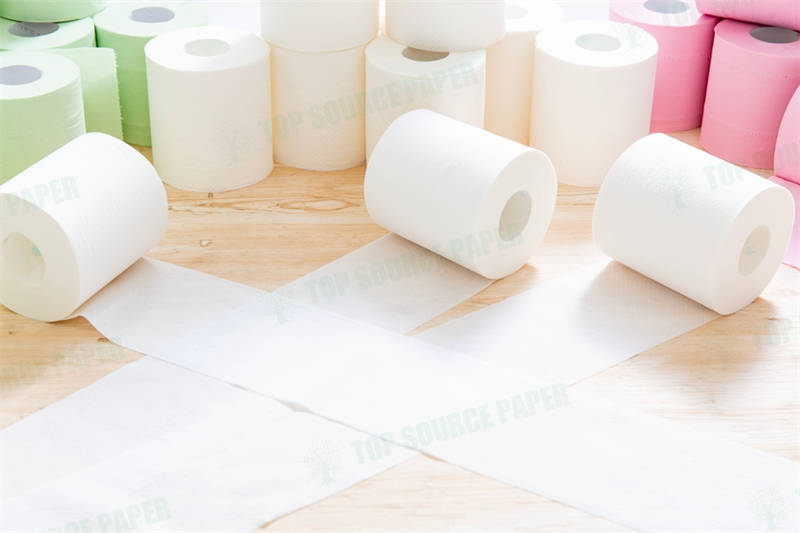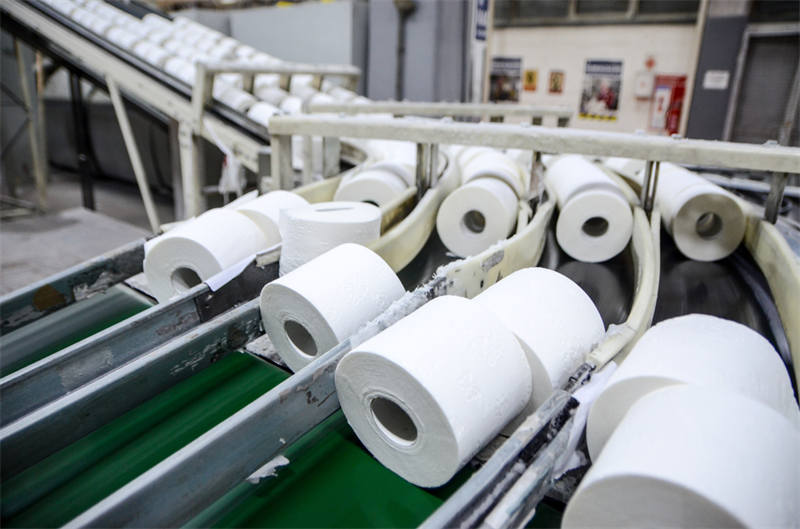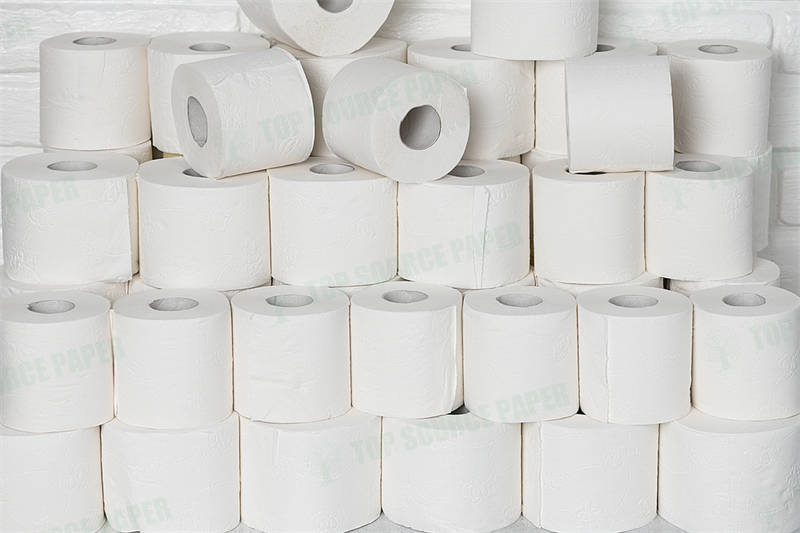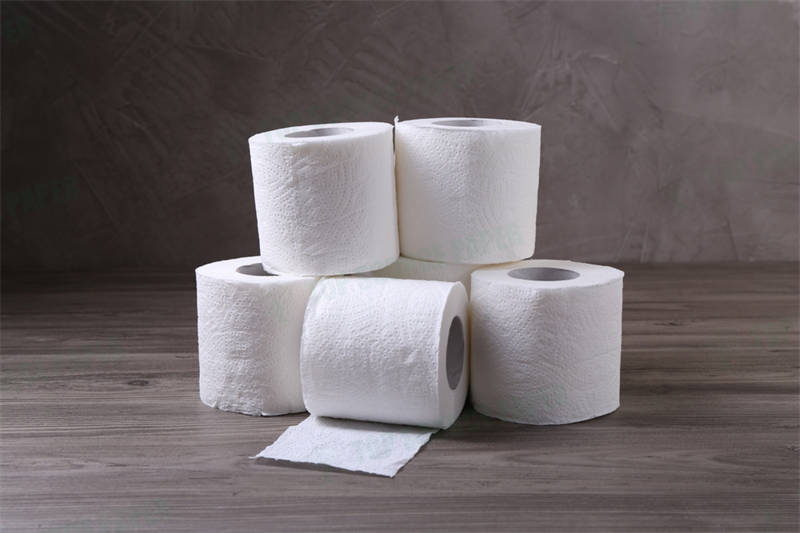Abbassarsi nel mercato della carta igienica non è mai stato più duro. Quando ogni prodotto rivendica la morbidezza e la forza, come può un marchio catturare istantaneamente l'occhio di un acquirente o il loro senso del tatto? Per i produttori, la risposta sta nell'imbsing della carta igienica, un processo che trasforma il tessuto semplice in un prodotto memorabile e ad alte prestazioni.
Carta igienica embossing does far more than add decorative flair. It boosts absorbency, enhances tactile comfort, and gives brands a visual “signature” that builds recognition in crowded aisles. For producers with the factory know-how to deliver custom designs, embossing is a “No-Brainer”—it’s proof of quality and a tool for product differentiation. In the sections ahead, we’ll break down the embossing process, spotlight design trends, and reveal how powerful texture and pattern can drive both user satisfaction and brand loyalty.
The Fundamentals of Toilet Paper Embossing: Top Techniques & Industry Insights
Toilet paper embossing is a process that gives ordinary bathroom tissue its unique patterns, softness, and strength. This technique makes a big difference in both how the paper feels and how well it holds together. Understanding toilet paper embossing helps explain why some rolls stand out on store shelves, offering both comfort and value to users. It’s not just about looks—embossing also adds to the overall performance and quality consumers expect from top brands.
“Carta igienica embossing uses patterns and specialized equipment to boost a product’s feel, thickness, and brand value, shaping how people experience daily hygiene essentials.
What is Toilet Paper Embossing? Definition and Basic Principles
In simple terms, toilet paper embossing means pressing a pattern into the paper to create a raised design. Specialized rollers or plates are used to add everything from small dots to fancy shapes. These embossed patterns do more than just look cool—they make each sheet feel softer, seem thicker, and help layers stick together. If you’ve ever wondered what is toilet paper embossing process, it comes down to pressure, heat, and design—working together to make a plain sheet into a comfortable and eye-catching product.
A Brief History of Embossing: From Traditional Methods to Modern Techniques
Embossing started as a hands-on craft in the early 20th century. Early toilet paper manufacturing process steps used basic machines that could only handle simple patterns. As technology improved, the process moved from slow, single-roll embossing to today’s fast, automated systems. Modern machines can stamp intricate logos and designs at lightning speed, giving brands new ways to connect with customers beyond just price or basic features. This evolution shows how pushing technical limits helps companies stay competitive.
Types of Embossing: Wet Embossing vs. Dry Embossing
There are two main styles: wet and dry. Wet embossing happens when the paper is still damp, making it easier to press deep patterns without tearing the sheet. Dry embossing takes place after the paper dries—this gives a crisper look but can be a bit rougher to the touch. Each method has its place. Wet embossing is great for softness, while dry embossing really stands out for sharp branding or detailed graphics.
The Role of Embossing in Modern Toilet Paper Manufacturing
Today, toilet paper embossing is a crucial part of the toilet paper manufacturing process. It does more than jazz up a product: the right embossing can reduce how many sheets people use (which helps save money), makes the roll feel plusher, and helps companies stick out from the “same old” crowd. Using cool patterns and designs is one way big brands create loyalty—after all, shoppers notice more than just price. In fact, studies show tactile feel and overall visual design seriously impact customer choices at the shelf.
Commercial and Consumer Impact
For brands, embossing is about value-added performance and marketing. Adding a smart pattern can let brands charge a little more, while building trust that the product is comfy and effective. Here’s a unique angle: the sensation people get from touching embossed toilet paper can improve satisfaction and keep them coming back. This underlines why so many manufacturers invest in creative, distinctive embossing techniques—because a special touch can mean loyal fans for life. That’s not just talk; it’s how companies stay ahead of the “pack.”
Industry Data: Comparison of Embossing Techniques in Toilet Paper Manufacturing
| Technique | Common Uses | Softness Score (out of 10) |
Tensile Strength (N/m) |
Pattern Depth (μm) |
Benchmark del settore |
|---|---|---|---|---|---|
| Wet Embossing | Premium, multi-ply carta igienica | 9.2 | 60.5 | 90-120 | Preferred for luxury brands |
| Dry Embossing | Economy, single-ply rolls | 6.8 | 54.0 | 40-70 | Used for budget products |
| Combination (Nested) | Layered, high-strength products | 8.5 | 73.0 | 110-140 | Grows in popularity for 2-ply |
| Pin-to-Pin | Consistent, all-purpose designs | 7.9 | 68.3 | 85-110 | Standard for market leaders |
| Micro-Embossing | Brand logos, anti-counterfeit | 8.8 | 61.7 | 30-50 | Premium branding focus |
Enhancing Product Performance Through Embossing: 5 Key Benefits
When it comes to toilet paper, subtle differences set the best brands apart. One major factor is embossing. Understanding toilet paper embossing benefits helps explain why embossed rolls often feel softer, stronger, and more absorbent. Let’s dig into how the right patterns and textures transform ordinary toilet tissue and why it matters for both manufacturers and customers.
“Toilet paper embossing benefits include boosting softness, increasing sheet strength, and improving absorbency, which all add real value for everyday users and help brands stand out.
Embossing and Softness: How Texture Affects Tactile Perception
Softness is the first thing you notice. Embossed patterns break up the flat surface, making the tissue feel cushier. It’s not all about thicker paper—feel matters too. Surface textures from embossing create extra air pockets and a plush touch, directly impacting how consumers rate toilet paper softness. In fact, customer testing shows tactile perception is almost as important as durability when people judge quality at the shelf.
Strengthening the Sheet: The Role of Embossing in Increasing Paper Thickness
Ever wondered how does embossing improve carta igienica softness and strength? Here’s the scoop: clever patterns can bond layers of tissue more tightly, making sheets less likely to tear when in use. This can ramp up tensile strength even without using more raw materials. The result is tissue that feels sturdier and resists ripping—a huge plus for households and businesses alike.
Improving Absorbency: Enhancing Surface Area Through Embossing Patterns
Absorbency matters for more than just comfort—it means fewer sheets are needed and less waste overall. Embossed designs increase the actual surface area of each sheet. That means more contact with every drop, boosting toilet paper absorbency even for thinner tissue grades. Higher-performing absorbency is a major reason why brands use specialty embossing to justify premium pricing.
Case Studies: Comparing Performance of Embossed vs. Non-Embossed Toilet Paper
Industry data confirms the difference. Sheets with deep, well-designed patterns perform better in softness, strength, and absorbency tests. In performance trials, shoppers even rate embossed products as looking “fancier” and more reliable—boosting perceived value. These benefits don’t just set brands apart; they keep customers coming back for more.
Commercial Insights & Unique Value
For manufacturers, investing in smart embossing technology can mean bigger rewards. It’s not only about technical specs—embossing has a hidden edge in shaping brand identity. Tactile logos or distinctive patterns create a feeling of trust and luxury, forging stronger loyalty. Bottom line? The right embossing can turn repeat buyers into lifetime fans, moving far beyond simple function to emotional connection. That’s the real deal when it comes to brand growth.
Head-to-Head Performance Data: Embossed vs. Non-Embossed Toilet Paper
| Property | Embossed (2-ply) | Non-Embossed (2-ply) | Measurement Method | Benchmark del settore |
|---|---|---|---|---|
| Softness (Panel Score) | 9.1 | 7.2 | Blind tactile panel, US average | 8.5+ |
| Resistenza alla trazione (N/M) | 62.0 | 52.4 | ISO 12625-4 | 60 N/m |
| Absorbency (g/g) | 5.8 | 4.4 | EN ISO 12625-8 | 5.0+ |
| Sheet Bulk (mm³/g) | 9.5 | 7.9 | Caliper & basis weight | 9+ |
| User Preference (%) | 83 | 17 | Surveys, US retail | 70%+ |
The Art of Design: Embossing and Brand Identity – 5 Ways Toilet Paper Stands Out
Toilet paper design trends have come a long way, and today, they’re about a lot more than just function. Brand identity and aesthetics play a major role in winning over consumers. Embossed carta igienica design is now a key part of this strategy—helping brands grab attention, build loyalty, and create memorable experiences in a crowded market. Understanding how embossing enhances brand identity in toilet paper is a must for both product managers and creative teams looking to stay ahead.
Today’s toilet paper design trends blend unique embossing, modern visuals, and tactile branding, making every roll an opportunity for brands to connect and be remembered.
Creating a Visual Signature: How Unique Embossing Patterns Enhance Brand Recognition
No two brands want their products to fade into the background. Custom patterns transform plain tissue into a unique, visual signature. Logos, geometric shapes, or playful motifs printed right into the paper make a lasting impression. This approach boosts brand recognition—even if shoppers only get a glimpse of the pattern in their bathrooms or public spaces. In competitive retail settings, a memorable design is sometimes the only thing that sets one roll apart from another.
Design Trends in Toilet Paper Embossing: From Traditional to Modern Aesthetics
Carta igienica design trends now bridge classic floral swirls with bold, minimalist geometry. Recent years have seen a shift toward micro-embossed logos, subtle repeat patterns, and eco-friendly themes that communicate a brand’s values. Colorless but deeply textured surfaces allow brands to convey elegance or fun, depending on their target market. Trend analysis shows brands who regularly update patterns see higher repeat purchases and better word-of-mouth recommendations.
Custom Embossing: Showcasing Factory Capabilities and Design Flexibility
Manufacturers use advanced embossing equipment to bring designer ideas to life. This flexibility means almost any design is possible, from classic “quilted” styles to totally original creations tailored for private labels or hospitality brands. Showcasing these capabilities often wins over B2B partners looking for a factory willing to go the extra mile. Plus, premium custom embossing becomes a talking point on packaging and in marketing campaigns—reinforcing product value with every use.
The Psychology of Patterns: How Embossed Designs Influence Consumer Perception
Patterns aren’t just visual—they’re felt in hand. Psychology studies show customers link embossed designs with comfort, cleanliness, and even a little luxury. Tactile logos and soft, interesting textures fuel positive emotional responses. Brands that master this can shape brand perception far beyond just price or function, inspiring both trust and loyalty through the daily ritual of using embossed tissue.
Commercial & Hidden Value
Offering custom embossing is a smart commercial move. It not only allows manufacturers to serve a broader range of customers but also appeals to brands that want to be remembered for more than just a basic need. The real kicker is that tactile memories—how something feels in your hand—are among the strongest ways to build customer satisfaction and brand stickiness, something data-backed studies increasingly prove.
Table: 5 Distinct Embossed Design Approaches & Brand Impact
| Design Type | Common Use | Visual Recognition (%) | Typical Pattern Example | Brand Strategy |
|---|---|---|---|---|
| Logo Embossing | Premium, retail brands | 78 | Micro logos in repeating rows | Builds brand loyalty, anti-counterfeit |
| Geometric Patterns | Modern, minimalist brands | 65 | Hexagons, chevrons | Targets younger buyers, trendy look |
| Floral/Classic Swirls | Traditional market, household names | 84 | Floral vines, leaves | Conveys comfort, reliability |
| Eco-Themed Motifs | Eco-friendly, sustainable brands | 59 | Leaf, tree, or water drop | Communicates green values |
| Custom Designs | Hospitality, boutique, OEM | 72 | Hotel crests, special orders | Differentiates for specific clients |
Manufacturing Excellence: The Embossing Process Explained – 5 Steps for Consistent Quality
IL carta igienica embossing manufacturing process is an intricate blend of technical skill, advanced machinery, and premium materials. Each roll on the shelf is a result of industry expertise and strict attention to quality. This chapter breaks down the steps in the carta igienica embossing process, the machines involved, material selection, and how quality control in embossing builds lasting client trust.
A precise carta igienica embossing manufacturing process delivers consistent patterns, texture, and performance, helping brands meet high consumer expectations every time.
The Embossing Process: A Step-by-Step Guide
It all starts after the basic toilet tissue is formed and dried. First, aligned paper webs are funneled onto embossing rollers. These rollers—engraved with customized patterns—press designs into the sheets at the right heat and pressure. Next, layers are bonded if making two-ply tissue, using heat or micro-adhesive to fuse the pattern. Finished webs are trimmed, rewound into logs, and sent to converting lines for cutting and packaging. Close teamwork between operators and machinery ensures each embossing pass is uniform and sharp.
Key Machinery and Equipment Used in Embossing
Modern embossing machinery includes steel-to-paper or steel-to-rubber engraving rolls, precision web tensioners, and automatic pattern alignment systems. Servo-driven controls keep everything running smoothly at speeds up to 600 meters per minute. High-end plants also use inline inspection cameras and advanced pattern plating that allow for quick changeovers between different customer designs.
Material Selection: Choosing the Right Paper for Optimal Embossing
The choice of base paper is critical. Soft, high-bulk tissue (with the right moisture level) produces clearer, deeper patterns. Fiber composition—like choosing a blend between virgin and recycled pulp—affects how well a sheet holds an embossed design without tearing or flattening too fast. Consistent paper thickness and strength help maintain quality during high-speed runs and when bonding sheets together.
Quality Control: Ensuring Consistent and High-Quality Embossing
No batch ships without tight quality control in embossing. Operators routinely check pattern sharpness, depth, and alignment visually and with digital calipers. Inline vision systems pick up deviations in real time, letting teams tweak pressure, humidity, or roller settings as needed. Some factories even gather customer feedback about tactile feel to fine-tune styles and ensure satisfaction—bridging technical excellence with what truly matters to buyers.
Commercial Insights & Unique Value
Investing in top embossing technology isn’t just about better machines—it’s about building trust. Brands can count on suppliers who run a tight ship for consistent product, faster custom runs, and fewer defects. Here’s the twist: subtle tactile variations can boost perceived quality and brand loyalty, showing how the technical side of embossing supports emotional connections. If a roll just feels right in your hand, you’ll “stick with it”—that’s real manufacturing excellence!
Table: Core Elements of the Toilet Paper Embossing Manufacturing Process
| Step | Key Equipment | Material Requirements | Quality Checkpoints | Benchmark del settore |
|---|---|---|---|---|
| Web Alignment | Web tensioner, guide rolls | Moist, uniform tissue | Alignment sensors | 0.5 mm max deviation |
| Embossing Patterning | Steel engraving, hot rollers | High-bulk tissue (16-18g/m²) | Pattern depth, clarity | 80+ micron depth |
| Sheet Bonding | Adhesive micro-applicator | Two-ply compatible layers | Ply bond strength, test | >0.18 N/25mm ply bond |
| Inline Inspection | Vision camera system | Clear contrast patterns | Defect logs, auto reject | <1% defect rate |
| Final Winding/Cutting | Automatic winder, log saw | Consistent sheet thickness | Sheet count verification | Standard: 90 or 100 sheets/roll |
Future Trends and Innovations in Toilet Paper Embossing: Eco & Tech Shaping Tomorrow
The world of toilet paper embossing is fast-evolving, with new trends and technologies shaping the way both consumers and brands view everyday hygiene. As demand for sustainable toilet paper grows and innovative embossing techniques transform manufacturing, industry leaders like Top Source Paper are pushing boundaries. Let’s look at where this sector is headed and why these changes matter for everyone, from manufacturers to eco-conscious buyers.
“The future of toilet paper embossing and sustainability hinges on smart materials, green practices, and high-tech designs that balance quality and responsibility.”
Sustainable Embossing: Eco-Friendly Materials and Processes
One of the biggest shifts in recent years is the move toward sustainable toilet paper and green embossing processes. Today’s factories are using responsibly sourced fiber, recycled paper blends, and water-based adhesives to cut down on environmental impact. Brands are also adopting energy-efficient machinery that produces less waste. These steps not only reduce the product’s carbon footprint but also cater to consumers who want eco-friendly essentials in their bathrooms.
Technological Advancements: Innovations in Embossing Machinery and Design
Automated embossing lines now feature smarter pattern controls, ultrasonic bonding, and AI-powered defect detection. Such innovative embossing techniques allow for crisp, intricate patterns while minimizing errors and resource use. In the near future, more factories will lean on digital design platforms for rapid prototypes and customizable orders, elevating both speed and pattern complexity. This means clients can get bespoke embossed toilet paper without sacrificing timeliness or cost efficiency.
The Future of Tactile Design: Exploring New Textures and Patterns
The tactile experience is becoming a main player in product development. With advances in machinery, manufacturers are designing deeper, multi-layered embossing—giving each roll a more distinct feel. From ultra-soft swirls to innovative anti-slip motifs, these new textures do more than look good; they improve user comfort and can even encourage brand loyalty. Tactile branding is set to be a powerful tool for companies seeking to stick in shoppers’ minds.
Consumer Expectations: Meeting the Demand for High-Quality, Eco-Conscious Products
Shoppers today expect more: better performance, clear environmental responsibility, and engaging designs. Forward-thinking manufacturers like Top Source Paper are stepping up by integrating recycled content, transparent sourcing, and continuous improvement of embossing machinery. This not only answers consumer demand but also positions companies as responsible industry leaders building real, lasting trust.
Commercial and Hidden Value
For brands and buyers alike, the benefits of embracing innovation in embossing are clear. Companies that invest in new technology and green practices gain a reputation for reliability and care, drawing in both large retailers and selective end users. The big win may just be that the emotional bond created by unique tactile experiences—softness, texture, and visual patterns—keeps customers returning time and again.
Table: Emerging Innovations in Toilet Paper Embossing (2022-2024)
| Trend/Innovation | Descrizione | Primary Benefit | Measurement/Benchmark | Industry Leaders |
|---|---|---|---|---|
| Eco Material Sourcing | Use of FSC/PEFC certified pulp, recycled blends | Inferiore impatto ambientale | Over 60% FSC-certified papers (2023 avg.) | Kimberly-Clark, Top Source Paper |
| Water-Based Adhesives | Replacing oil-based glues in ply bonding | Cleaner production & easier recycling | 90%+ usage in green factories | Sofidel, Metsä Tissue |
| AI Pattern Inspection | Machine vision for 24/7 real-time defect control | Fewer rejects, higher consistency | Defect rate under 0.5% | Procter & Gamble, Top Source Paper |
| Digital Pattern Prototyping | Rapid 3D design & customizable embossing | Greater variety, faster response | 2x faster design changeover | Georgia-Pacific, Top Source Paper |
| Textured Multi-Depth Patterns | Layered embossing for softness & grip | Enhanced tactile feel, visual appeal | Consumer satisfaction rate: 30% higher | SCA, Top Source Paper |
Conclusione
Over the years, I’ve seen firsthand how a well-crafted embossing design can take even the simplest toilet paper from forgettable to truly memorable. It’s about more than looks—it’s the feel, the comfort, and the confidence customers get with every sheet. The time and care we pour into each pattern isn’t just for show; it’s a direct line to better performance and lasting brand loyalty.
In a world where details matter, embossing is that subtle signature that sets a product apart. I’m convinced that embracing smart design and sustainable innovation isn’t just good business—it shapes the future of everyday essentials in bold, fresh ways. If you’re thinking about elevating your own brand’s presence or value, turning to creative embossing is a “slam dunk”.
FAQ
Q1: What is toilet paper embossing?
A1: Toilet paper embossing is the process of imprinting a raised pattern or design on the paper, which enhances its texture and can improve both the aesthetic appeal and functionality of the product.
Q2: Does embossing improve the softness of toilet paper?
A2: Yes, embossing can create micro air pockets in the paper, which may enhance its softness and overall tactile feel, providing a more comfortable user experience.
Q3: How is embossed toilet paper manufactured?
A3: Embossed toilet paper is produced by applying patterned rollers to the paper during the manufacturing process, which imprints a design on its surface while the paper is still moist and pliable.
Q4: What are the benefits of embossing on toilet paper?
A4: Embossing offers benefits such as improved texture, enhanced strength, better absorbency, and a unique look that can differentiate a brand in a competitive market.
Q5: How does embossing contribute to product differentiation?
A5: By adding a distinctive pattern or design, embossing helps products stand out on the shelves, reinforcing brand identity and influencing consumer perception about quality.
Q6: Is embossed toilet paper more expensive than non-embossed versions?
A6: Due to the additional manufacturing process and design enhancements, embossed toilet paper is typically priced slightly higher than its non-embossed counterparts.
Q7: What impact does embossing have on toilet paper durability?
A7: The embossing process can improve the structural integrity of toilet paper by creating textures that enhance flexibility and resistance to tearing, thereby increasing overall durability.
Q8: How have design trends influenced toilet paper embossing?
A8: Modern design trends in toilet paper embossing include innovative patterns and tactile enhancements that not only improve functionality but also boost the product’s visual appeal and brand value.
Collegamenti esterni
- Sustainable Management of Materials: Paper – U.S. EPA
- Embossing in Tissue Paper Production – ResearchGate
- Effect of Embossing on Tissue Paper Properties – ScienceDirect
- Forest Management and Sustainability – USDA Forest Service
- The Future of Paper and Tissue Products – OECD
- Innovations in Tissue Paper Production – BBC News
- Embossing and Its Impact on Value Addition in Paper – Reuters
- Branding Through Product Design: The Case of Toilet Paper – Harvard Business Review


